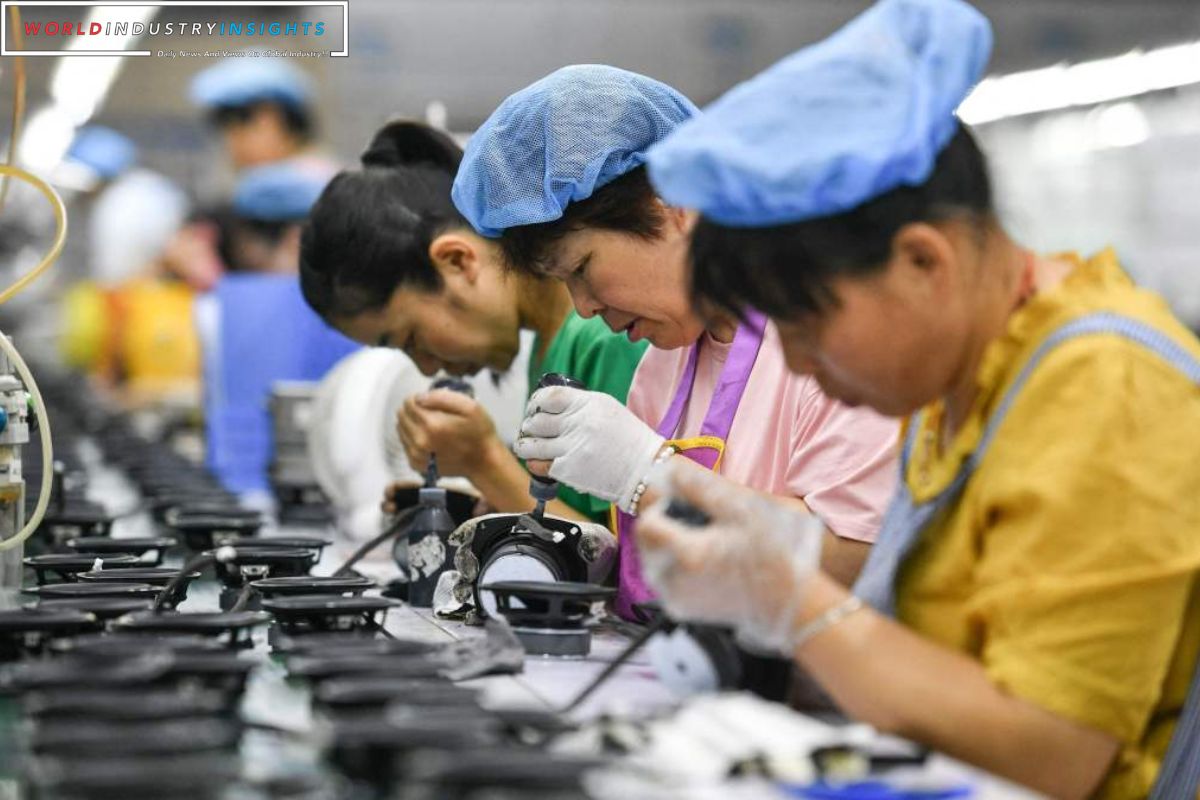China’s Factory Output Surges: China’s industrial output and retail sales growth surpassed expectations in October, signaling some positive momentum in the economy. Industrial output expanded by 4.6% year-on-year, beating the anticipated 4.4% increase, marking the highest growth since April. Retail sales also saw improvement, rising 7.6% in October, exceeding predictions of 7.0%. This positive data, however, is met with cautious optimism as challenges persist, particularly in the crisis-hit property sector, hindering a complete economic revival.
The world’s second-largest economy has faced obstacles in its post-COVID recovery, including housing market distress, local government debt risks, slow global growth, and geopolitical tensions. Policy support measures, while modestly effective, have increased pressure on authorities to consider additional stimulus to sustain growth.
While the recent data reflects some recovery, analysts remain wary of the weak links in the economy, particularly the property sector. Concerns about sustained longer-term growth persist due to the lack of major reforms. Prolonged weakness in external demand may impact industrial production despite recent improvements.
Consumption during the eight-day Golden Week holiday in October did not meet government estimates, indicating consumer concerns about job security and income growth in an uncertain employment market. The nationwide jobless rate remained at 5.0% in October, unchanged from September.
China has implemented various policy measures to stimulate the economy, but the effects have been marginal. While October’s data shows positive signs, other indicators released in recent weeks suggest muted growth momentum. Imports grew unexpectedly, but exports shrank, household borrowing remained weak, and factory deflation persisted.
Authorities face a delicate balancing act, as aggressive monetary support could widen interest rate differentials with the West, potentially leading to capital outflows. Beijing is cautious about a return to large-scale fiscal stimulus, given the risks of increased debt.
Despite challenges, China’s economy grew faster than expected in the third quarter, and it is anticipated to reach the government’s full-year growth target of around 5%. The People’s Bank of China (PBOC) has injected liquidity into the system but kept interest rates unchanged, indicating a cautious approach.
The crisis-hit property sector continues to pose challenges, with property investment falling 9.3% in January-October. Fixed asset investment expanded by 2.9% in the first 10 months, missing expectations, while confidence among private businesses remains subdued.
In summary, while recent data indicates some positive economic momentum, challenges persist, requiring careful policy considerations to prevent economic setbacks.
Also read: Asia Manufacturing Woes: Factory Activity Slips Amid Global Compression
Our Reader’s Queries
Did China retail sales factory output grow more than expected in October?
China’s industrial output surged by 4.6% YoY in October, surpassing September’s 4.5% growth rate, according to the National Bureau of Statistics. This exceeded the 4.4% increase predicted in a Reuters poll and represented the highest growth rate since April.
What is the manufacturing output of China in dollars?
China’s manufacturing output for 2022 saw a modest increase of 1.36% from the previous year, reaching a total of $4,975.61B. This follows a significant surge in 2021, with a 27.15% increase from 2020, bringing the total to $4,909.01B. These figures demonstrate China’s continued dominance in the manufacturing industry, with steady growth and impressive gains in recent years. As the world’s largest exporter, China’s manufacturing output is closely watched by global markets and investors.
Why has China’s production increased?
Over time, a significant portion of the global manufacturing industry has shifted to China due to the country’s cost-effective workforce and advantageous governmental policies. These policies involve substantial investments in infrastructure and trade capabilities.
What is the main cause of China’s recent rapid economic growth?
China’s remarkable economic performance can be attributed to its impressive productivity growth, which was fueled by the market-oriented reforms of 1978. Despite the challenges associated with measuring economic variables in China, numerous tests have confirmed that this is indeed the primary driver of the country’s success. These findings remain robust even when faced with significant obstacles.


